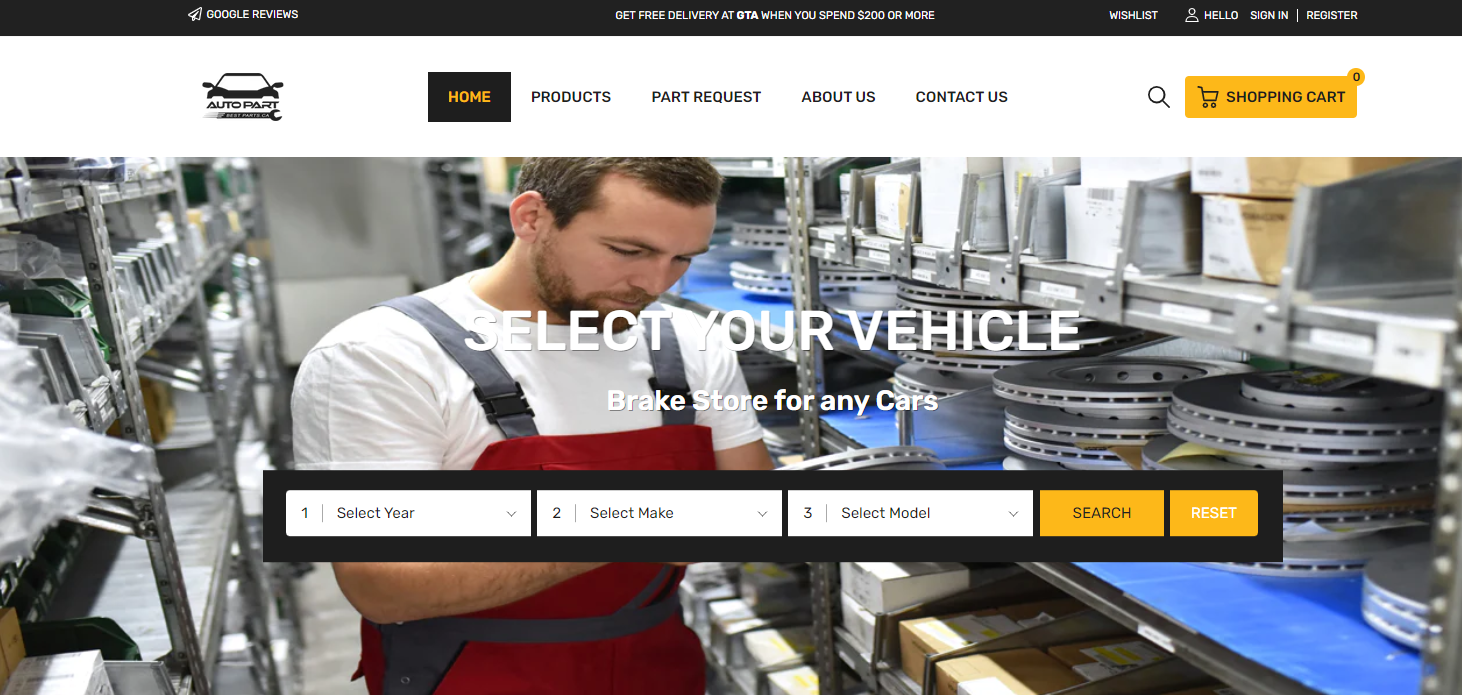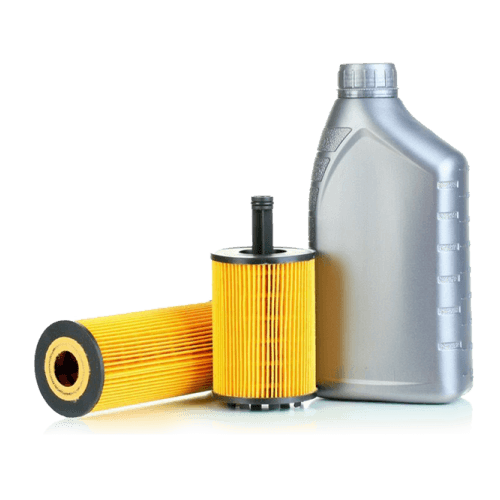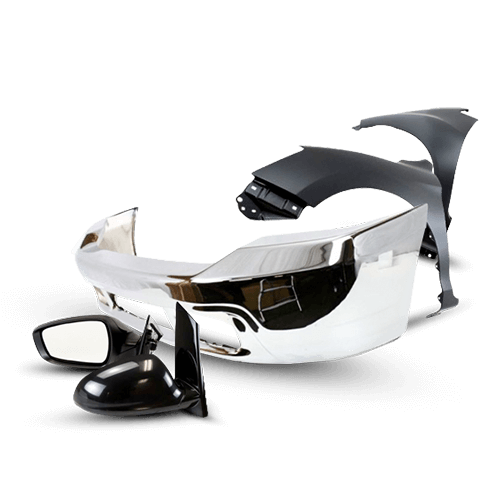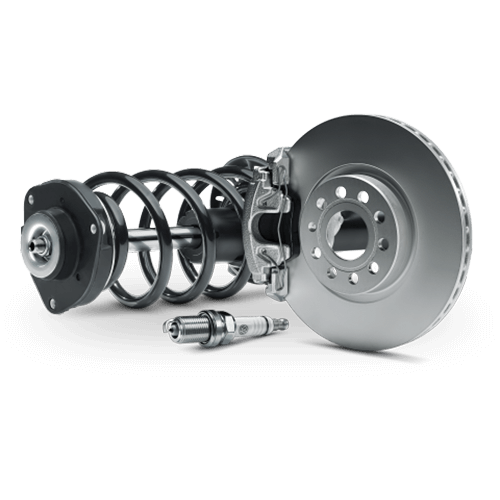Brake pad
- Featured
- Best selling
- Alphabetically, A-Z
- Alphabetically, Z-A
- Price, low to high
- Price, high to low
- Date, old to new
- Date, new to old
Brake pad
Brake pads are a crucial component of the braking system in vehicles, playing a vital role in ensuring safe and reliable stopping power. When it comes to modern vehicles equipped with disc brakes, the brake pad is the key element that creates friction against the rotating rotor, ultimately bringing the vehicle to a stop.
When the driver applies pressure to the brake pedal, hydraulic force is transmitted to the brake caliper. The caliper then presses the brake pads against the rotating brake rotor. This contact generates friction, which converts the vehicle's kinetic energy into heat energy. The resulting resistance slows down or brings the vehicle to a stop. Car brake pads are composed of friction materials, such as semi-metallic or ceramic compounds, which are designed to provide effective braking performance and heat dissipation. The materials used in brake pads are carefully selected to ensure durability, minimize noise, and provide optimal performance in various driving conditions.
Types of car Brake pad
There are several types of brake pads available on the market, each offering different characteristics and advantages. In the rest of this section, we will introduce you to some of the most common types of brake pads. Keep in mind that the choice of brake pad type depends on various factors, including driving style, vehicle application, and personal preferences. It is important to consider factors such as braking performance, noise level, dust production, rotor wear, and budget when selecting the most suitable brake pad for a particular vehicle.
Organic car Brake Pads
Non-asbestos organic (NAO) brake pads are made from a blend of organic materials such as synthetic glass fibers, aramid fibers, and Kevlar that are bonded together by resin. Organic brake pads are quieter, produce less dust, and are gentler on the brake rotors in general.
Semi-Metallic car Brake Pads
Semi-metallic brake pads are made up of metallic fibers like steel or copper mixed with an organic binder. These pads provide superior heat dissipation and braking performance in a wide range of temperatures and driving conditions. They are more durable and provide better stopping power than organic pads, but they are slightly noisier and generate more dust. Furthermore, semi-metallic pads may wear down brake rotors faster than organic pads.
Ceramic car Brake Pads
Ceramic brake pads are created by combining a dense ceramic compound with copper fibers or other filler materials. They are well-known for their excellent braking performance, particularly in high-temperature conditions. When compared to organic and semi-metallic pads, ceramic pads produce less dust, are quieter, and provide smoother braking. They also have a longer lifespan and are more resistant to wear down brake. Ceramic pads, on the other hand, are typically more expensive than other types.
Low-Metallic car Brake Pads
These pads are similar to semi-metallic pads but contain a lower percentage of metallic fibers. They offer improved braking performance and heat dissipation compared to organic pads. Low-metallic pads provide good stopping power, but they may produce more noise, wear down the brake rotors faster, and generate more dust compared to ceramic pads.
When should we replace the brake pad?
The exact timing for brake pad replacement can vary depending on several factors, including driving habits, road conditions, vehicle type, and the type of brake pads installed. However, there are a few common signs that indicate it's time to replace the brake pads:
Thickness
Most brake pads have wear indicators, which are small metal tabs embedded within the pad material. When the brake pad wears down to a certain thickness, these indicators come into contact with the rotor, causing a squealing noise. If you hear this noise when braking, it is a clear indication that the brake pads are nearing the end of their useful life and should be replaced.
Visual Inspection
The car brake pads can be inspected visually through the wheel spokes. If the friction material on the pads appears thin (less than 3-4 millimeters), they should be replaced. Additionally, if the pads appear unevenly worn, damaged, or have deep grooves, they should be replaced.
Reduced Braking Performance
If you notice a reduction in braking efficiency, such as a longer stopping distance or a spongy brake pedal, it could mean that the brake pads are worn out and need to be replaced. This can happen as the friction material deteriorates, reducing the pads' ability to generate enough friction against the rotors.
Warning Light
Some vehicles are equipped with a brake pad wear sensor that triggers a warning light on the dashboard when the pads are nearing the end of their lifespan. If you see the brake pad warning light illuminated, it's a clear indication that the pads should be inspected and replaced if necessary.
Mileage and Time
While mileage and time alone are not reliable indicators of brake pad replacement, they can be used as a general guideline. Brake pads typically last between 30,000 and 70,000 miles (48,000 to 112,000 kilometers), depending on driving conditions. However, the other signs mentioned above must also be considered.
It is critical not to put off replacing brake pads if they are worn out or damaged. Driving with worn brake pads can jeopardize your safety and cause additional damage to the braking system. If you are unsure about the condition of your brake pads or require assistance, it is best to consult a professional mechanic or consult your vehicle's manual for specific recommendations.
Important points of buying Brake pads
There are several important factors to consider when purchasing brake pads to ensure you get the right ones for your vehicle and driving needs. Here are some important considerations to bear in mind:
Compatibility
Make sure the brake pads you buy are compatible with the make, model, and year of your vehicle. Because different vehicles have different brake pad sizes, mounting systems, and specifications, it's critical to select pads that are specifically designed for your vehicle.
Brake Pad Varieties
Consider the brake pads that are best suited to your driving style and needs. Compare the advantages and disadvantages of various types of pads, such as organic, semi-metallic, ceramic, or low-metallic pads, in terms of performance, noise level, dust production, durability, and cost.
Quality
Choose high-quality brake pads from reputable manufacturers or well-known brands. Quality brake pads are more likely to provide consistent braking and long-lasting performance. Look for OEM (original equipment manufacturer) standards or higher.
Performance
Consider your vehicle's desired braking performance. If you drive aggressively or at high speeds, you may want to use brake pads that are specifically designed for increased stopping power, such as performance or sport pads. Standard or premium brake pads may be sufficient for daily commuting and driving.
Driving Conditions
Consider the driving conditions you frequently encounter. If you often drive in hilly or mountainous terrain, tow heavy loads, or drive in extreme temperatures, you may require brake pads that excel at high temperatures and provide consistent braking under demanding conditions.
Noise and Dust
Examine the brake pads noise and dust characteristics. Ceramic pads are known to generate less noise and dust than other types. Ceramic pads may be a good option if you want to reduce brake noise or dust accumulation on your wheels.
Warranty
Check if the brake pads come with a warranty or guarantee. A warranty can provide peace of mind, as it ensures that you can seek assistance or replacement in the event of premature wear or defects.
Professional Guidance
If you are unsure about the best brake pads for your vehicle or have specific concerns, it is best to consult a professional mechanic or follow the recommendations of the vehicle manufacturer. They can offer advice based on the specifications of your vehicle and your driving habits.
By taking these important factors into account, you can make an informed decision and choose brake pads that are compatible, dependable, and tailored to your specific needs, thereby improving both the safety and performance of your vehicle.
Factors affecting the brake pads cost
Several factors can influence the brake pads price. In the following, he mentioned some of the things that can affect the brake pads cost:
Brand and Manufacturer
Established and reputable brands often command higher prices due to their reputation for quality and performance. They may have invested in research and development to create innovative brake pad formulations, which can contribute to higher costs.
Type and Material
Different types of brake pads, such as organic, semi-metallic, ceramic, or high-performance brake pads, have varying manufacturing processes and material costs. Ceramic brake pads, for example, are more expensive due to their advanced materials and performance characteristics.
Quality and Performance
Brake pads that offer superior braking performance, reduced noise and dust, and extended durability often come at a higher price point. Higher-quality materials, advanced engineering, and improved manufacturing processes can contribute to the increased cost.
Vehicle Make and Model
The brake pads cost is affected by the make and model of your vehicle. Some vehicles necessitate specialized brake pad designs or larger pad sizes, which may be more expensive to produce and less widely available, resulting in higher prices.
Market Conditions
Local market conditions, including supply and demand dynamics, can affect the pricing of brake pads. Prices may vary between regions or even different retailers within the same area.
OEM vs. Aftermarket
OEM brake pads, which are made by the same manufacturer that supplied the pads with your vehicle, can be more expensive than aftermarket options. OEM pads are designed to meet the specifications of the vehicle manufacturer, ensuring compatibility and performance. Aftermarket brake pads, on the other hand, can vary in terms of quality and price depending on the brand and materials used.
Buying Brake pads Brands Online from Best Parts
You can browse our website and the products on this page if you're looking for high-quality, genuine car brake pads. At “Best Parts”, we carry a large selection of brake pads from leading manufacturers. Therefore, if you're thinking about ordering brake pads online, whether they be organic, semi-metallic, or ceramic, the "Best Parts website" has suitable options for you.
The Best Parts website is designed to make your purchasing experience as simple as possible. With a few mouse clicks, you can browse our products and compare their specifications and features. We have provided detailed descriptions and specifications for each car brake pad to help you choose the right brake pads.
You may enjoy the convenience of online shopping and have your brake pads delivered straight to your door when you order with us. For additional information or guidance on purchasing automobile brake pads, please contact (647) 878-9944.











